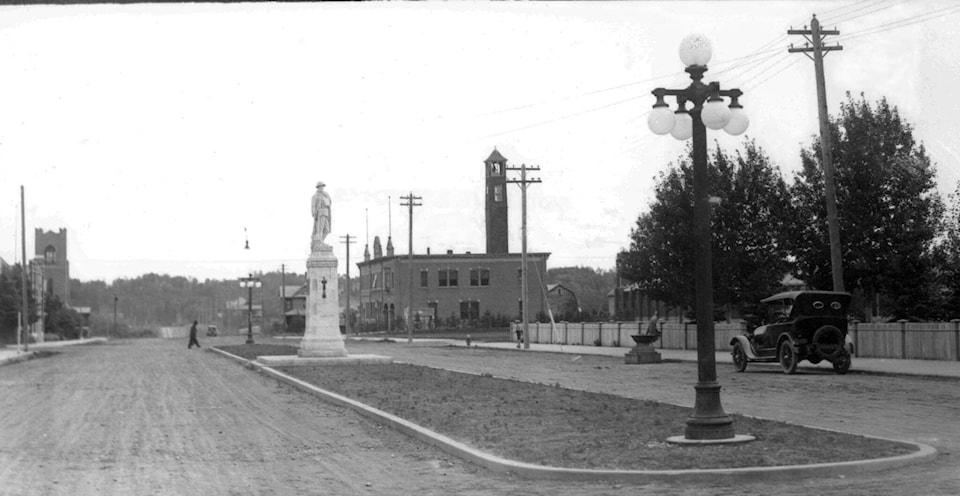Another annual Veterans’ Week is upon us, culminating in Remembrance Day on Nov. 11. It is time to remember all those who served and all those who lost their lives in times of war and during peacekeeping operations in order that we might continue to enjoy freedom and peace.
The motto of Veterans’ Week this year is “Service, Courage and Sacrifice, At Home, Around the World and Across the Generations.” Specific events being remembered are the 105th anniversary of the horrific Battle of the Somme in the First World War, the 80th anniversary of the tragic Battle of Hong Kong in the Second World War, the 70th anniversary of the notable Battle of Kapyong in the Korean Conflict, the 65th anniversary of the first large-scale U.N. peacekeeping mission in the Suez of Egypt, and the 10 anniversary of the end of the Canadian combat mission in Afghanistan.
A key symbol of the remembrance is the poppy. Poppies have long been associated with warfare. During the Napoleonic Wars of the early 1800s, people noticed how bright red poppies often sprang up on the battlefields and in cemeteries.
However, the international use of the poppy as a flower of remembrance has as its origins in the poem, In Flanders Fields. That famous verse was written by a young Canadian doctor, Lieutenant Colonel John McCrae, on May 3, 1915, during the First World War.
McCrae was devastated by the death of a close friend during the terrible Second Battle of Ypres. During the funeral service, he was struck by the way that the poppies grew around the graves of the young soldiers. Consequently, he wrote his famous poem the next day, while sitting in the back of an ambulance.
The poem was published in the popular British magazine, Punch, in December 1915. It quickly became popular as a moving statement of both sacrifice and remembrance.
In November 1918, as the First World War was finally drawing to a close, an American Y.M.C.A. worker, Moina Michael, was inspired by McCrae’s poem to start a campaign to have the poppy adopted as an international symbol of remembrance.
In 1920, a Frenchwoman, Anna Guerin, advanced Michael’s idea by proposing the sale of artificial poppies as a means of raising funds for orphans of the war and to help with the restoration of the devastated areas of France and Belgium.
On July 5, 1921, the Canadian Great War Veterans Association (G.W.V.A.) adopted the poppy as its flower of remembrance. It agreed to promote the wearing of the poppy on Armistice (Remembrance) Day. It also undertook to coordinate the sales of lapel poppies, for 10¢ each, with the funds going towards assistance for the widows and children of those who had lost their lives in the war, as well as veterans and their families.
The Canadian government designated Monday, November 7, 1921 as a national holiday as both a day of Remembrance and Thanksgiving for Peace. In Red Deer, the local G.W.V.A. coordinated the sale of the poppies along with classes from the Red Deer Public School.
The G.W.V.A asked that people wear their “Flanders” poppies on the actual Armistice Day anniversary of November 11. They also asked the poppies only be worn until sunset.
The poppy initiative went very well with some $170 worth of poppies being sold locally (roughly 1,700 poppies in a city of 2,800 residents). It had similar success across Canada.
In 1922, there were a couple of changes. The original silk poppies had been made by orphans in Northern France and Flanders. Now, they were to be made by disabled veterans in Canada, particularly those who were still hospitalized.
A decision was also made to have wreaths of poppies laid as a remembrance at the war memorials. There was a request by the G.W.V.A. that no wreathes be laid prior to the commencement of Armistice Day services.
Today, 100 years later, under the auspices of the Royal Canadian Legion, which was created by the G.W.V.A. and other groups in 1925, the poppy remains an enduring symbol of honour and remembrance to all those who served and all those who lost their lives in times of war and during peacekeeping operations.
Red Deer historian Michael Dawe’s column appears Wednesdays.
